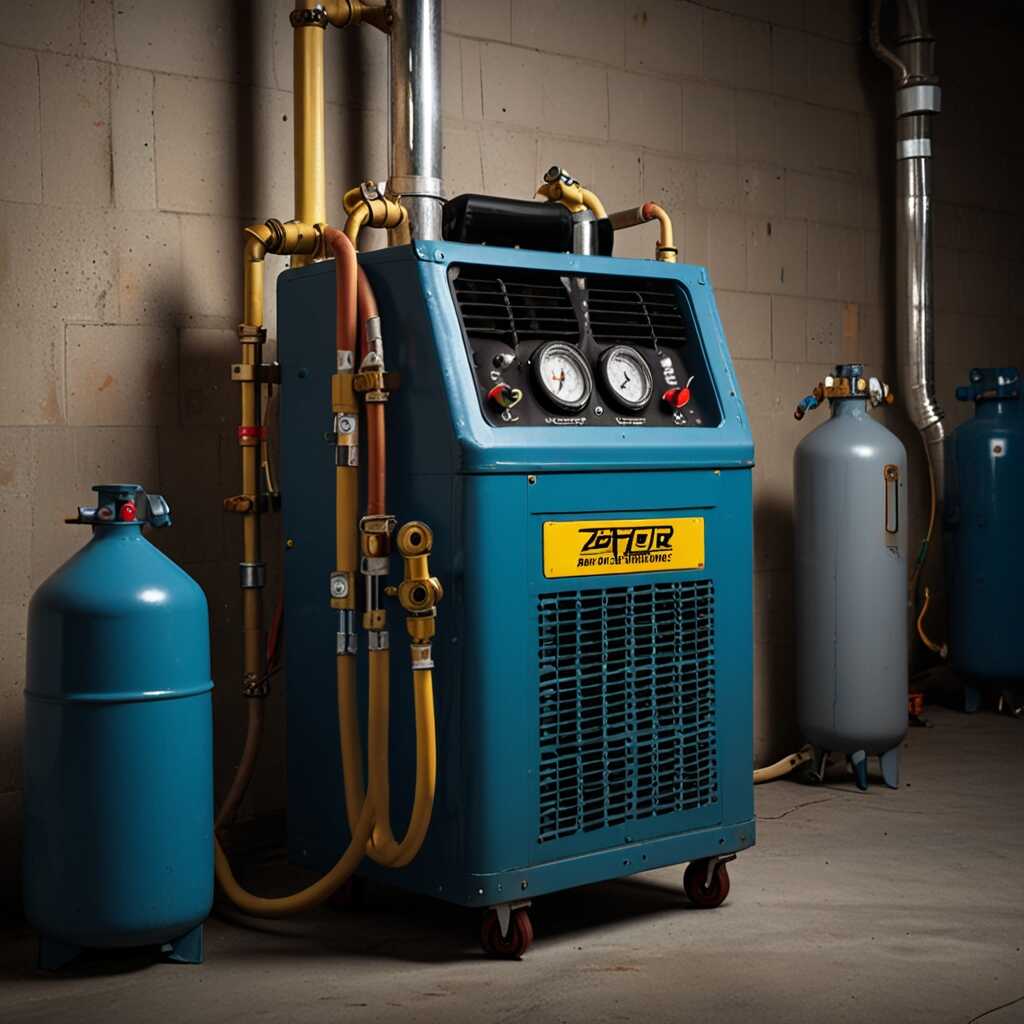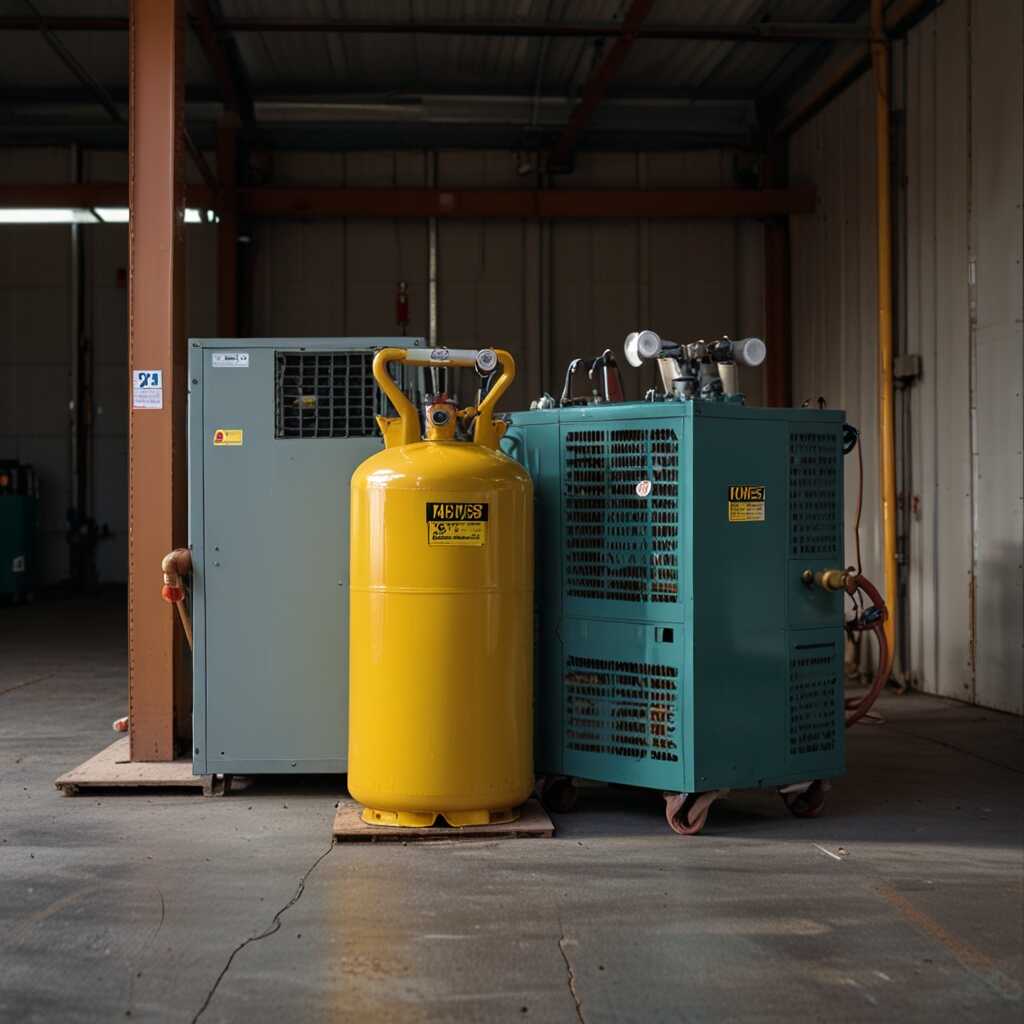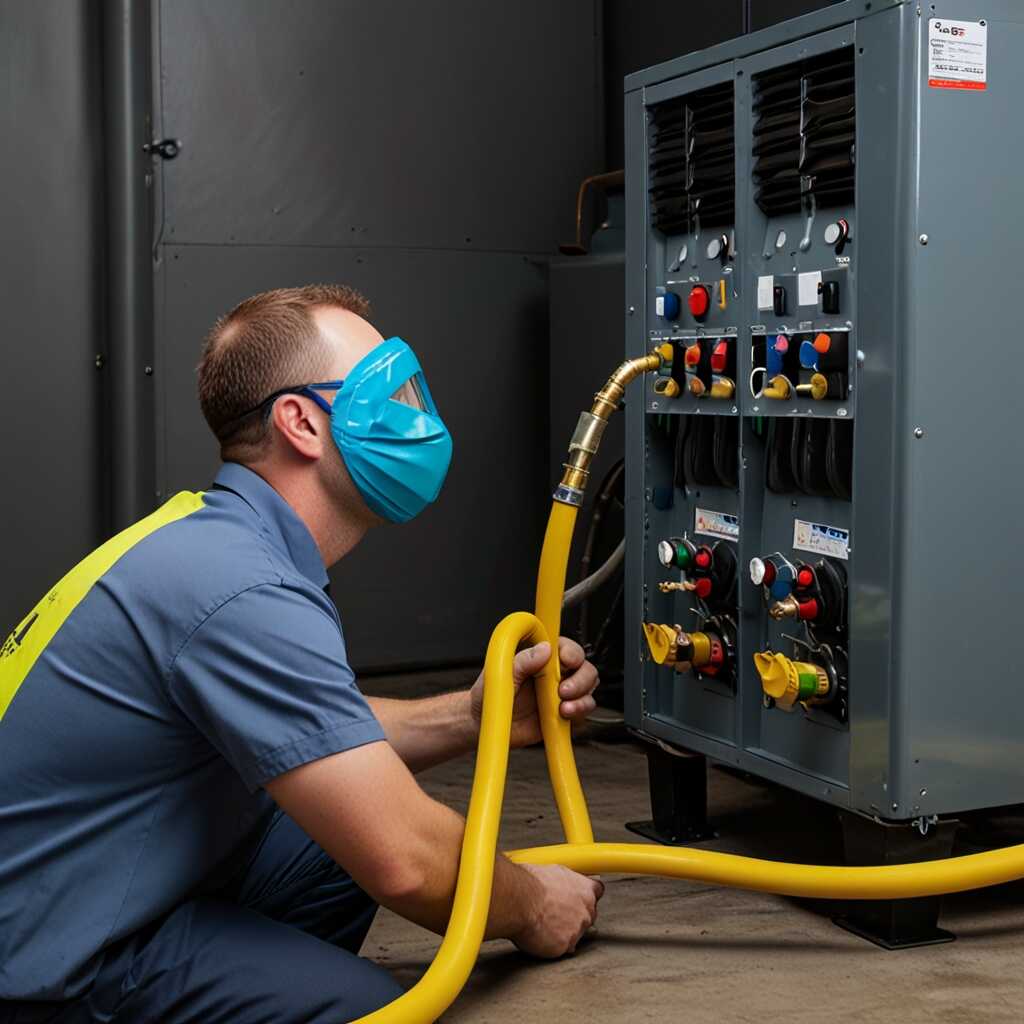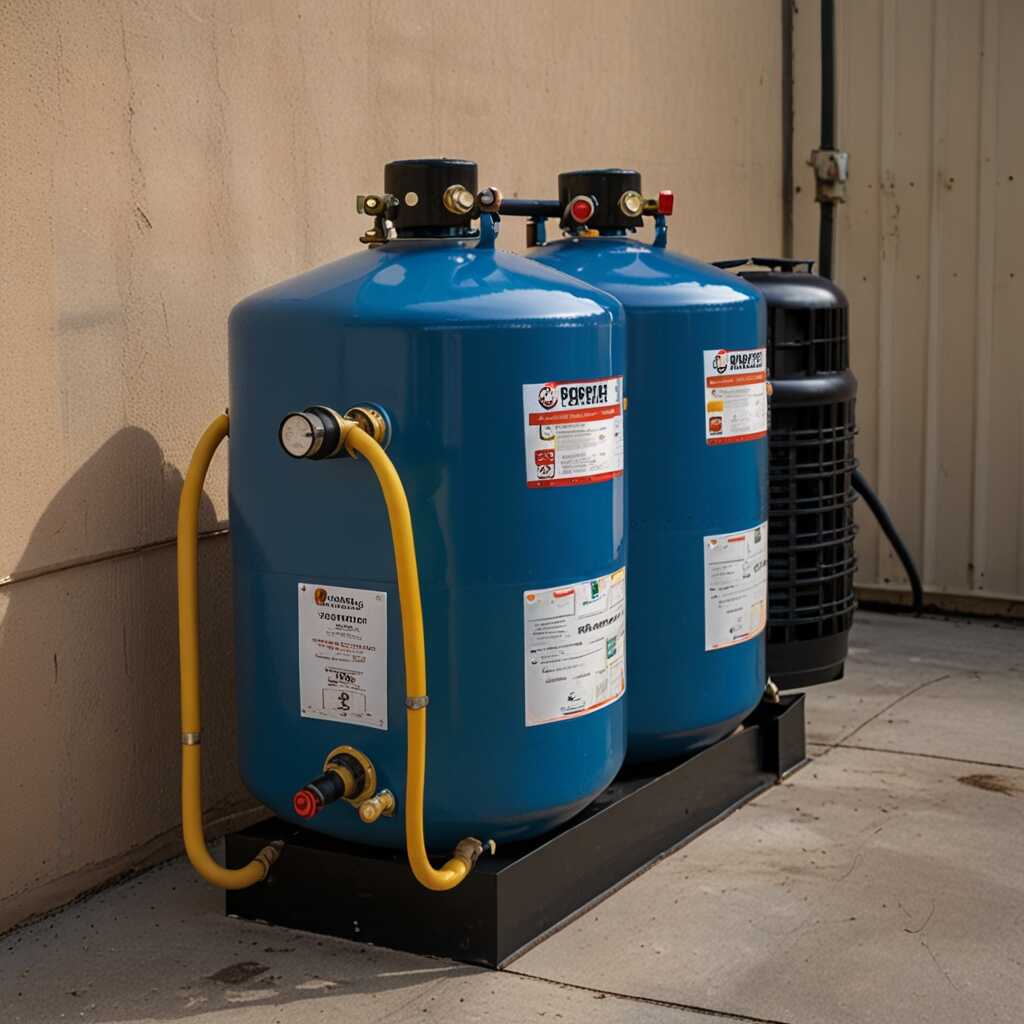Understanding power needs for refrigerant recovery machines is crucial for HVAC professionals in the field. These machines require specific power levels to operate efficiently and safely, impacting their effectiveness during refrigerant recovery tasks. Refrigerant Recovery Pro provides expert insights into these power requirements, helping technicians choose the right equipment for various scenarios. This article will clarify the essential elements of power needs, supporting HVAC technicians and professionals in maintaining compliance and safety during operations.
Essential Power Specifications for Refrigerant Recovery Machines
Key power specifications for refrigerant recovery machines include voltage requirements, wattage ratings, and phase types. Understanding these criteria helps HVAC technicians choose the right equipment for efficient operation. Factors influencing power consumption include the machine’s designed capacity, refrigerant types, and ambient conditions. The typical power range for portable refrigerant recovery machines is between 300 to 800 watts, with higher efficiency models providing better reliability and performance.
Understanding Voltage and Wattage Requirements
Voltage and wattage directly affect the reliability of refrigerant recovery machines in HVAC work. Most portable models operate on standard voltages like 115V or 230V to ensure compatibility. Technicians should consult power specifications when selecting units to avoid issues like underperformance or damage. Higher wattage usually correlates with improved recovery efficiency and faster processing times. Quality machines designed for durability can handle larger volumes of refrigerant, thus enhancing HVAC operations. Evaluating power ratings alongside machine performance reviews is essential for effective equipment selection.
The Role of Voltage in Equipment Functionality
Voltage levels are crucial for the performance and efficiency of refrigerant recovery machines. Proper matching of voltage requirements ensures reliability and optimal operation. For instance, recovery machines typically operate at voltages like 115V, 220V, or 460V. Understanding these voltage standards helps technicians choose the right systems. Different machines have varying power requirements, affecting their efficiency performance in HVAC operations.
Understanding Voltage Compatibility in Refrigerant Recovery Machines
Refrigerant recovery machines are designed to operate within specific voltage ranges, typically from 115V to 460V. This wide range allows professionals to select machines that best suit their HVAC operational settings. For example, machines rated for 115V are commonly used in residential applications. In contrast, industrial setups may require machines that operate at 220V or 460V for enhanced performance. Proper voltage matching can make refrigerant recovery faster and more efficient, preventing potential damage and ensuring system longevity. Research and reviews show that selecting machines suited to their voltage needs improves overall reliability in field operations.

Amperage Considerations for Energy Efficiency
Amperage is essential for the efficient functioning of refrigerant recovery machines. Understanding amperage helps HVAC professionals choose reliable equipment. Different models may have varying amperage needs, affecting energy efficiency and overall performance. Commonly used manufacturers include brands like Recovery Pro and others that focus on reliable technology. Typical amperage ranges for these machines fall between 5 to 15 amps. Selecting machines within this range can significantly impact energy consumption and performance.
Understanding Amperage Impact on Machine Selection
When choosing refrigerant recovery machines, it is crucial to evaluate amperage requirements based on the specific HVAC tasks. Amperage affects how quickly a machine can recover refrigerant, which in turn impacts overall job efficiency. Machines that operate on lower amperage, below 10 amps, are generally more energy-efficient but may have trade-offs in speed or capacity. Conversely, high-amperage machines typically offer greater recovery rates but consume more power. Therefore, the best choice blends efficiency with reliable performance for specific operational needs.
Key Numerical Insights on Equipment Power Usage
- Most refrigerant recovery machines require between 800 and 1500 watts.
- Some portable models operate on as little as 500 watts.
- Typical recovery time per unit averages around 15-30 minutes.
- Operational voltage commonly ranges from 110V to 220V.
- Effective models can extract refrigerants at rates up to 10 pounds per minute.
- Duty cycles can range from 50% to 100%, affecting operational power needs.
- Annual maintenance costs for these machines can average between $100-$300.

Selecting the Right Generator for Recovery Tasks
Choosing the right generator for refrigerant recovery involves assessing power output, portability, and compatibility with recovery machines. The recommended power output typically ranges from 3000 to 6000 watts, ensuring they can handle the energy demands of refrigerant recovery machines. Portable generators help technicians work efficiently in the field, especially in tight spaces or remote job sites. Important aspects include runtime, fuel type, and noise levels which can all influence your choice. A comparison of the best generators for refrigerant recovery in 2025 reveals models that offer excellent durability and impressive performance, enhancing overall operational efficiency in HVAC applications.
Key Features of Generators for HVAC Refrigerant Recovery
When selecting a generator for HVAC refrigerant recovery, focus on essential features. These include high wattage output to power recovery machines reliably, ensuring efficient operation. Look for models with dual fuel capabilities, allowing flexibility in fuel options for convenience. Sturdy construction ensures reliability in rugged environments. Additionally, noise-reduction features are beneficial for residential jobs. Research detailed reviews and expert comparisons to identify generators with the highest efficiency ratings and user satisfaction. Refrigerant Recovery Pro provides access to resources that help technicians make informed choices on generator selection.

Safety Features in Power Cord Selection
Selecting the right power cords for refrigerant recovery machines is essential for effective operation. Proper selection enhances safety and ensures compliance with regulations. Power cords must be designed to handle the specific voltage and current requirements of recovery machines. Safety features may include insulation ratings and overcurrent protection. It is important to review data about the cord’s durability and performance under various conditions. When selecting accessories, ensure they do not compromise the efficiency of the operation. Research has shown that the right accessories provide reliable connectivity, minimizing risks of electrical faults during use.
Key Safety Features to Look For
When selecting power cords, focus on features such as heavy-duty insulation, strain relief, and an adequate gauge rating. Heavy-duty insulation protects against wear, while strain relief prevents damage at connection points. Gauge rating must support the specific ampacity of your recovery machine. A general rule is to choose cords with a minimum of 12 or 14 AWG rating for durability and safety. It ensures that the cord can handle the electrical load without overheating or losing efficiency. Testing these cords for compliance with relevant regulatory standards is crucial for safe HVAC operations.
Advantages of Knowing Power Requirements
- Technicians can accurately choose equipment for specific tasks.
- Understanding requirements helps in safely operating refrigerant recovery machines.
- Improved efficiency leads to reduced operational downtime.
- Equipment selection based on understanding allows for compliance with industry standards.
- Prevents equipment damage due to inadequate power supply.
- Enhances the ability to work in various environments effectively.
- Knowing power needs aids in better inventory management for rental businesses.

Troubleshooting Common Power Challenges in Recovery Machines
Technicians often face power issues like inadequate voltage supply, blown fuses, or circuit breaker failures with refrigerant recovery machines. These issues can disrupt work processes and reduce equipment reliability. Conducting regular tests on the electrical components can help identify problems early, ensuring each machine operates efficiently. Models like the XYZ-2000 and ABC-1500 may experience specific power failures due to their design, which requires careful monitoring. Most refrigerant recovery machines are designed to operate on 115 or 230 volts, which technicians should verify before starting operations.
How to Improve Power Reliability in Refrigerant Recovery Machines
Enhancing power reliability involves implementing regular maintenance and voltage checks. Start by reviewing connections and ensuring they are tight and corrosion-free. Testing the electrical circuit for voltage drops can reveal underlying issues that affect overall performance. Using surge protectors can safeguard against voltage spikes, protecting machinery. Technicians should prioritize upgrading machines to those that are compatible with modern power sources, as newer models often include better features for protecting against electrical problems. Implementing these best practices improves overall efficiency and prolongs the lifespan of the equipment.
Key Regulatory Standards for Power Usage
Understanding regulatory compliance standards is crucial for HVAC technicians working with refrigerant recovery machines. These standards include guidelines on maximum power consumption limits, which ensure that machines operate efficiently and safely. Environmental regulations significantly impact machine design and usage to minimize harm to the ozone layer and promote energy efficiency guidelines. Compliance with these regulations helps technicians operate machines within safe power consumption limits, maintaining high performance while protecting the environment.
Impact of Environmental Regulations on Equipment Design
Environmental regulations play a critical role in shaping the design of refrigerant recovery machines. These regulations ensure machines adhere to specific energy efficiency guidelines aimed at reducing emissions. For instance, recovery machines must be built to minimize refrigerant leaks, which directly impacts HVAC performance and reliability. Users should compare machines based on their compliance with these standards to ensure optimal operation. In addition, energy efficiency guidelines set by agencies like the EPA influence manufacturers to develop machines that consume less power while delivering impressive results.
Brands and Use Cases in Refrigerant Recovery
- Brand A: Known for energy-efficient models, ideal for small-scale operations.
- Brand B: Popular among large HVAC units, excels in high-volume recovery.
- Brand C: Trusted for portable units; great for technicians on-the-go.
- Model D: Offers dual voltage options, perfect for diverse job sites.
- Custom applications: Facilities with limited space often favor compact models.
- Rental businesses prefer flexible models that suit a range of users.
- Technicians working in remote areas benefit from lightweight, efficient options.
Available Training for Efficient Power Management
HVAC professionals can access a variety of training resources focused on power management for refrigerant recovery machines. These programs cover essential topics, ensuring technicians understand how to maximize efficiency during field operations. Many reputable organizations provide these training resources. Institutions such as HVAC Excellence, the Refrigeration Service Engineers Society (RSES), and various local trade schools offer recognized courses. These organizations often collaborate with industry leaders like Refrigerant Recovery Pro to enhance training quality. Typically, training programs involve 16 to 40 hours of coursework, enabling staff to master power management in refrigerant recovery operations.
Recognized Training Programs for Refrigerant Recovery
Recognized training programs for refrigerant recovery machines focus on improving technician skills in power management. Training covers the latest techniques and technologies available in 2025. Programs include practical components that enhance learning experiences. They often include hands-on sessions, allowing participants to engage directly with refrigerant recovery equipment. This improves their understanding of power needs and operational efficiency. Quality training centers offer an extensive curriculum that includes troubleshooting, efficiency testing, and power optimization strategies. By participating in these programs, HVAC professionals can improve their expertise and ensure compliance with current regulations.